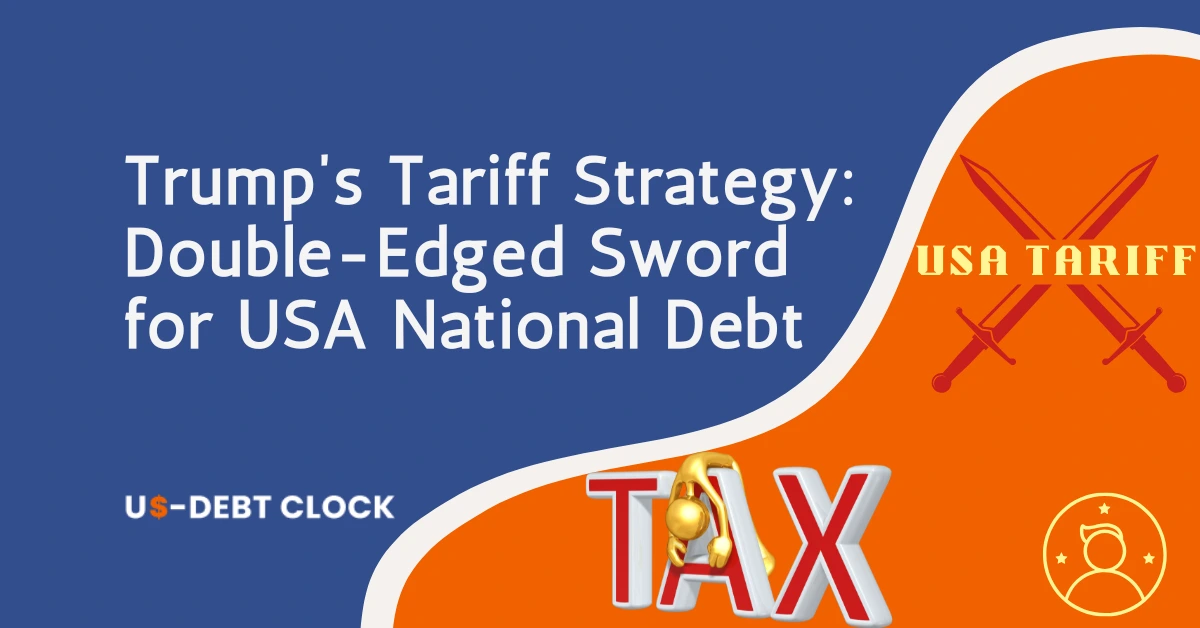Donald Trump began his second term as the 47th president of the United States of America on January 20, 2025. The concern for the rising national debt of the USA, which reached $36.2 Trillion, at the beginning of 2025, is under scrutiny, as the government's spending exceeded revenue during Trump's first term as president, primarily due to increased military spending & tax cuts.
So, is Trump's Administration bringing something new to the table, or is he simply following his previous fiscal policies? The simple answer is NO, there's nothing significantly 'new' Whether it is focused on job creation, increased military spending, deregulation, or tax cuts, every plan of his is the same as his first presidency (2017-2021).
The national debt rose by over $7 trillion during his previous tenure. The only hope for slowing down the U.S. national debt this term lies in how he plans to implement these policies in response to inflation, rising interest rates & especially the global market.
Evaluation of Fiscal Policies under Trump's Administration
Tax Cut & Deregulation
First of all, there's tax cut & deregulation. One of the issues that his administration had during his previous tenure was cutting corporate tax rates and reducing individual tax rates i.e. the fact that high earners were simply paying less taxes, which led to lower government revenue when it should have been the other way around, wealthy individuals and corporations should have been paying more taxes. The cuts increased the debt rate without providing the expected offsetting growth in revenue.
So this time, hope lies in the fact that these tax cuts and lighter regulation will encourage wealthy corporations and individuals to increase business activities and create job opportunities, providing not only a short-term economic boost but resulting ultimately in sustainable revenue growth for the US government.
Better to focus tax relief on middle- and lower-income households, which tend to spend more and thus increase immediate economic activity. Further, his administration could look into removing tax loopholes.
Budget Allocations
Next, his budget allocations. One issue that concerned not only the USA but the whole world was the amount of funds being allocated to the USA's military department. Being one of the nations with the highest number of nuclear devices and armed forces, this budget allocation stunned the whole world in 2017. This clearly highlighted his "America First" belief.
The USA's Department of Defense is often criticized for overinflated contracts and overspending on old programs. As this budget allocation plan is the same this tenure too, we hope that his administration proceeds without cutting the funding for basic human needs like education, environment, and healthcare.
We hope he can find a balance between military modernization and critical investments like education, environment, and healthcare. Investment in education and healthcare will fuel a more productive workforce and lead to higher tax revenues without raising taxes.
Long-term investment in green technologies and renewable energy could go hand in hand with effective investment in defense system technologies without compromising national security and critical human needs that are health, education, and healthcare.
Trade Wars and Tariffs
Trump's Administration's fiscal policies had trade wars and tariffs with different nations, particularly with China. Many American companies that relied on Chinese raw materials for production faced delays and higher production costs due to trade taxes on Chinese goods. American consumers faced the consequences in the form of higher prices and supply shortages or delays.
Instead of increasing product manufacturing in the USA, these trade taxes simply led the USA to buy the same goods from different countries instead of China. It even damaged diplomatic relations with China and the European Union and started trade taxes against US products.
Instead this time his administration should focus on strategic trade taxes with China regarding intellectual property. It would be better if the USA would engage with international trade organizations like the World Trade Organization where there are set trade practices.
This would even provide the opportunity to improve and diversify relationships of the USA with trading partners. It would be a better approach to invest heavily in domestic industries for manufacturing renewable energy sectors and technology.
This would lead to less reliance on imports, skills development, and the creation of sustainable jobs which will generate higher government revenue.
Infrastructures Investment
Trump's administration proposed a $1.5 trillion infrastructure package during his previous tenure. He emphasized the need for massive infrastructure investment- rebuilding airports, roads, and bridges. He stated this could stimulate the economy and create employment.
However, all this relied heavily on private and state investments which didn't guarantee long-term funding. The idea of using public-private partnerships to fund projects without clear guarantees on federal investment was opposed. Instead of new ideas his administration simply tweaked old ideas of public-private partnerships and state-based funding without a structural approach.
It would be better if Trump's administration backed up the infrastructure investment plan with long-term federal investment during this tenure. It would be better to create a complete plan with a focus on climate strength with investment in public transit and green energy infrastructure.
The US federal government could work with state and local governments to target the most urgent infrastructure needs and create greater responsibility and transparency in how public-private partnerships are structured.
Effectiveness of the Trump Administration on the Economy
Gross Domestic Product Growth
Post-financial crisis, the US GDP grew slowly around 2 percent per year. During the early years of Trump's administration, the GDP grew at an average annual rate of 2.5 and 2.9 percent in 2017 and 2018 respectively.
This was because companies had more capital to invest and consumers had more disposable income, due to the 2017 tax reform.
Rate of Unemployment
During Trump's administration, USA went through a meaningful decline in the rate of unemployment. By the end of 2019, it dropped to around 3.5 percent, which was the lowest level in over fifty years.
It particularly had an impact on unemployed US minority citizens. In 2019, the unemployment rate of African Americans and Hispanics reached 6 and 4.2 percent respectively lowest level ever recorded.
Stock Market Growth
During the early years of the Trump administration, the USA's stock market experienced noticeable growth. In 2017, The S&P 500 increased by about 20%, and in early 2018, the Dow Jones reached 25,000 points.
Wealthier Americans' consumer confidence increased which led to higher household wealth for them.
United States of America Mexico Canada Agreement
The United States of America Mexico Canada Agreement was signed during Trump's administration which included new provisions on digital trade, intellectual property, and labor. This was signed after renegotiating with the North American Free Trade Agreement.
This agreement aimed to make trade more suitable for US industries and workers, particularly in agriculture and automobile.
What could make a difference on Trump's Second Administration?
Energy Independence
To stabilize global energy prices and strengthen the country's energy independence, Trump's administration could increase domestic energy production especially oil and natural gas. His administration could plan better business policies to increase investment for an increased supply of energy.
This could involve changing the permitting process for new energy projects in the USA. An increase in domestic energy production could create more job opportunities and drive economic growth in the energy sector.
Monetary Policy
Promoting the continuation of expansionary fiscal policies or offering tax incentives to encourage investment, Trump's administration could advocate for policies that focus on preserving liquidity and keeping borrowing costs low.
These policies will support businesses that may be struggling to grow and as well as help create job opportunities. When borrowing costs are kept low, it would be easier for businesses to acquire capital and invest in new projects.
Innovation and Technological Expansion
Innovation and technology are leading factors that can offer the U.S. an edge in the global economy and generate great revenue. By continued investment in industries like AI, 5G, and clean energy Trump's administration could drive long-term economic growth with the strategy of.
Investing in emerging innovation and information technology will help promote sustainability and efficiency as well as improve the overall quality of life for US citizens. The USA could secure a strong position in the ever-evolving global economy with the right investment in innovation and technological expansion.
Bilateral Deals
The US could aim at better business deals if Trump's administration focused on bilateral deals rather than multilateral agreements. Trade deals with individual nations would increase exports and generate more revenue for the US economy.
With bilateral deals, the USA can address trade policies and plans more effectively. The US could make agreements to fit the specific needs and interests of each country, potentially leading to more favorable terms for American businesses by negotiating bilateral deals.
Final Thoughts
Economic growth can only reduce national debt over time. It will require a combination of smart fiscal policies and long-term planning to make any meaningful progress in slowing the national debt rate.
As Trump's administration is still focused on implementing tax cuts and increasing military spending this tenure too, both of which are contributing factors to the growing debt in his previous tenure, it is tough to say Trump's administration can successfully slow down the rising national debt.
The only way Trump's administration can still address this pressing issue is by not repeating their previous mistakes.



